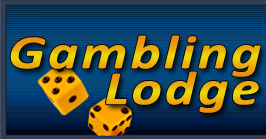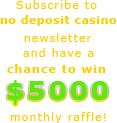Blackjack StrategieRulesBlackjack is a simple game offering a great return to the player. All you need to do is beat the dealer's hand without going over a score of 21. In blackjack, number cards are worth their face value, picture cards are worth 10 and the Ace is worth 1 or 10, at the players advantage. The object of the game is to get a higher value hand than the dealer, without going over 21 (busting). If the player finishes with a hand equal to the dealer's the hand is pushed. The game begins with the player placing a bet. Once the bet is placed, the player(s) is dealt two cards, both face up, and the dealer received two cards, with one face down. The player is then given the option of:
Once the player (s) has finished making their choices, the dealer will show their face down card and continue to receive cards until the value of their hand is 17 or more. If the dealer draws more than 21 they bust and players who are still in the game win. The fact that the dealer does not take a card until all player choices are made is where the dealer's big advantage lies. Players who bust lose the bet, even if the dealer subsequently busts. The highest had in the game is "blackjack", an Ace and a 10 or picture card. Blackjack beats 21 from 3 or more cards. A win to the player pays 1 to 1, unless the player has blackjack, in which case the player is paid 3 to 2. Insurance...If the dealer's up card is an Ace, insurance will be offered to the player. By taking the insurance bet, you are betting that the dealer's down card will be a 10 (ie the dealer gets blackjack). The insurance bet amount is almost always 50% of your initial bet stake, and pays 2 to1 if you win (ie the dealer gets blackjack). So here's an example: Your initial bet stake is $100, the dealer's up card is an Ace and insurance is offered; Now given the above scenario: If the dealer does get you lose your $100, but get 2 to 1 on the insurance bet - ie $150 so the overall effect is a $50 win. Now that you know how insurance works, don't use it, because it is actually a high house edge bet. Blackjack StrategyUsing basic Blackjack strategy will give you every chance of beating the casino. Just follow the plays set out below in the following matrix and you're playing basic strategy. You might want to print out this page for reference while you play. H = Hit  Basic blackjack strategy returns about 99% to the player, so the house edge is pretty skinny. Card Counting in Blackjack strategy Just remember, that while you can count cards at your local casino, you can't do it while playing all online games deal each new game from a full shuffled deck/shoe. But you are probably interested in how the pros beat the casinos, right? Well here are the basics. Card counting gives the player a means of knowing at a given point in a blackjack strategy game, whether they hold an edge over the house, based on a knowledge of the mix of cards remaining in the deck. The mix of cards remaining in the deck is crucial because the probability of the player winning a hand in blackjack increases when there is an abundance of 'high cards' (ie 10's, Aces and picture cards) remaining to be dealt. Why are high cards advantageous for the player? A high card rich deck will lead to more blackjacks being dealt to both the dealer and player. Blackjack strategy for the player pays 3 to 2, blackjack for the dealer is just like a normal dealer win. The dealer must hit on a stiff hand (12 to 16), which will more likely lead to a bust when the deck is high card rich. The player can sit on a stiff hand. The probability of success for double down bets for the player increases. Card counting simply gives the player an idea as to whether the remaining deck is high card, or low card rich, and therefore whether the probability of winning is enhanced or reduced for the remainder of the current deck/shoe. This can be done by keeping track of the cards already dealt as follows: Each card is assigned a tag;
You then simply keep a running count of the card's tags as they are dealt. Your count after the shuffle, and before the first deal is 0 (this indicates an equal number of large and small cards). If your running count is positive, the remaining deck is high card rich, if it is negative, the remaining deck is low card rich. You can practice your counting at home by dealing yourself a deck of cards, and counting as you go. If you finish with a 0 once the whole deck is dealt you got it right. Well, now that you can count cards, all you need to know is how to bet based on the count. In simple terms, you play basic strategy, and up the ante when your count is positive (by a degree consistent with the extent of the positive count) and reduce the ante when the count in negative. |



